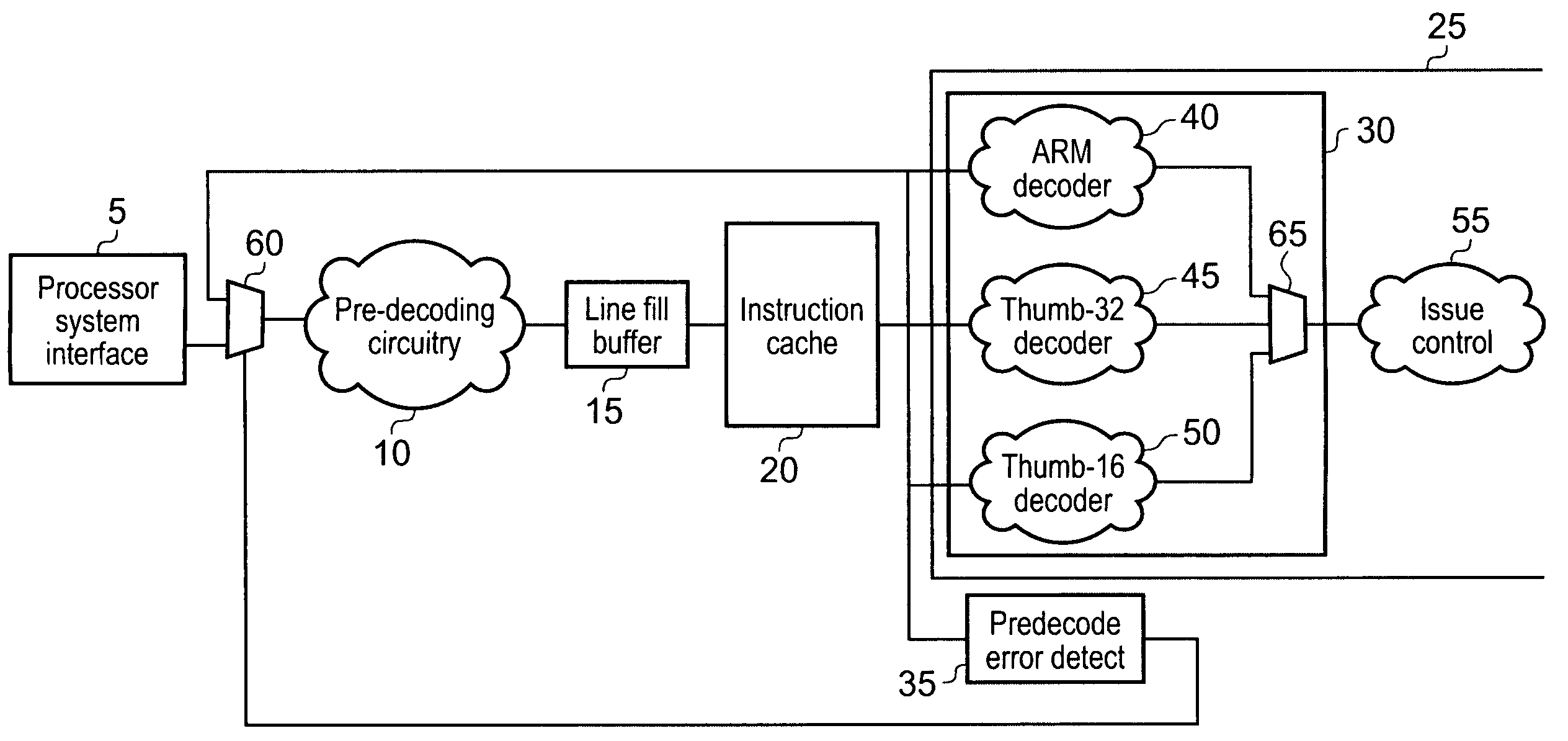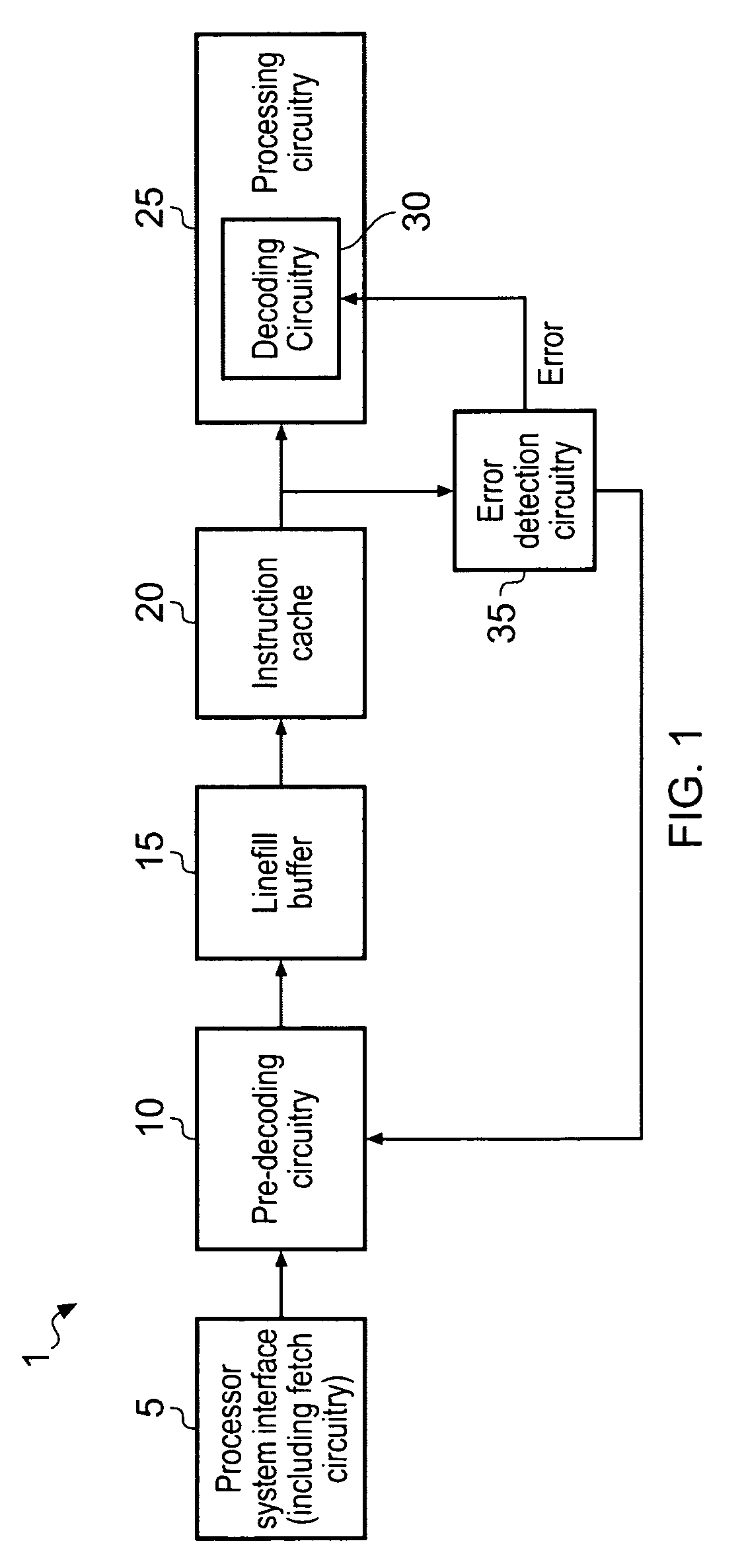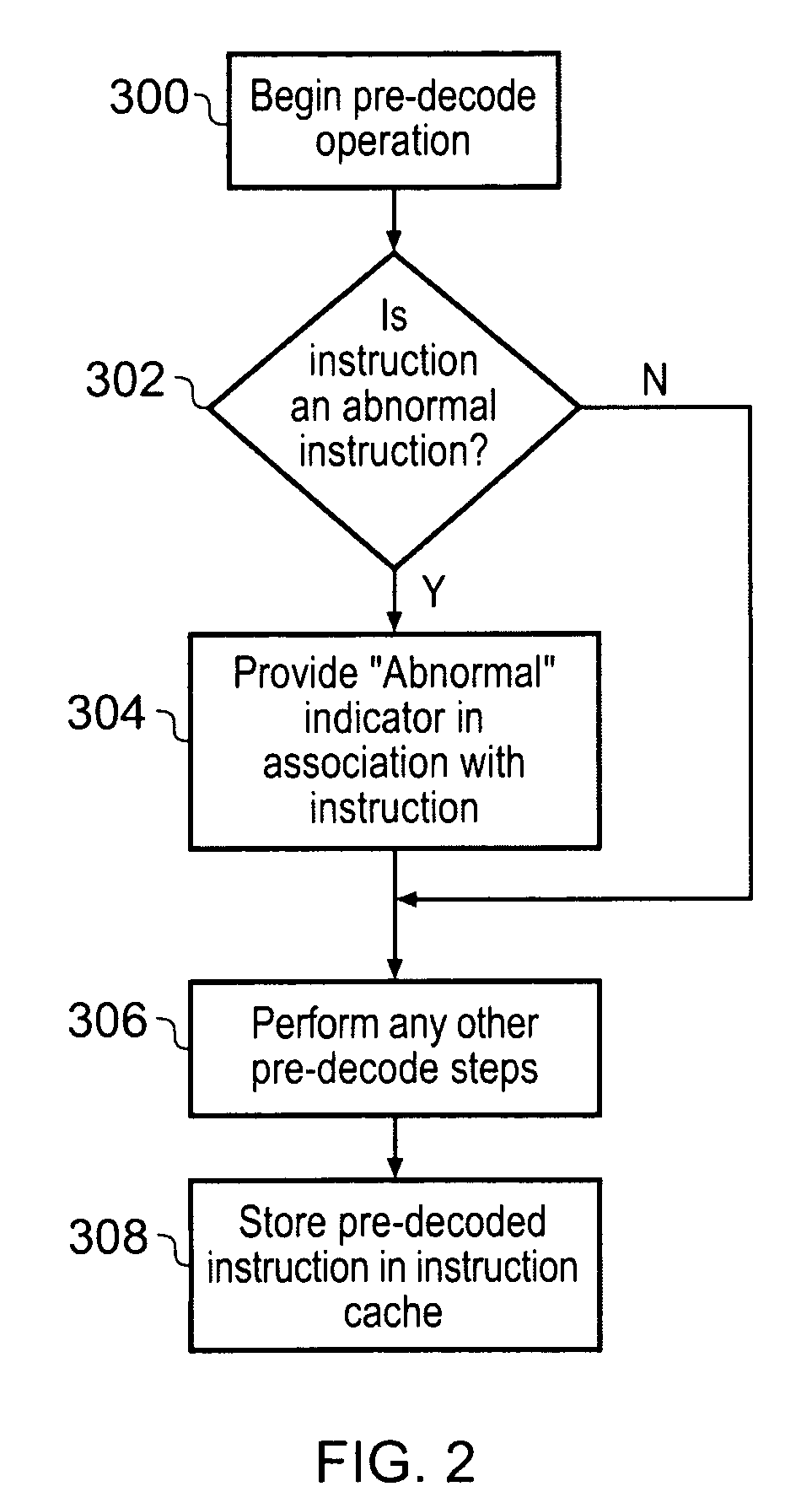Data processing apparatus and method for pre-decoding instructions
a data processing apparatus and pre-decoding technology, applied in the direction of electric digital data processing, program control, instruments, etc., can solve the problems of pre-decoding instruction corruption, significant power consumption in decoding instructions prior to execution, and typically not significantly alleviating the earlier mentioned power cost associated, so as to improve performance, improve power efficiency, and speed up the fixing mechanism
- Summary
- Abstract
- Description
- Claims
- Application Information
AI Technical Summary
Benefits of technology
Problems solved by technology
Method used
Image
Examples
Embodiment Construction
[0057]FIG. 1 schematically illustrates a data processing system 1 according to one embodiment. The data processing system 1 includes a processor system interface 5 which contains instruction fetching circuitry for fetching data representing program instructions from memory (not shown). The processor system interface 5 passes instructions fetched from memory to pre-decoding circuitry 10. The pre-decoding circuitry 10 performs pre-decoding operations on the instructions to generate pre-decoded instructions, which are passed to a line-fill buffer 15 and stored in an instruction cache 20. Instructions stored in the instruction cache 20 are executed by processing circuitry 25. The processing circuitry 25 includes decoding circuitry 30 for generating control signals from the pre-decoded instructions which control the processing circuitry so as to perform processing operations. The error detection circuitry 35 is employed to detect certain errors occurring in the pre-decoded instructions a...
PUM
 Login to View More
Login to View More Abstract
Description
Claims
Application Information
 Login to View More
Login to View More - R&D
- Intellectual Property
- Life Sciences
- Materials
- Tech Scout
- Unparalleled Data Quality
- Higher Quality Content
- 60% Fewer Hallucinations
Browse by: Latest US Patents, China's latest patents, Technical Efficacy Thesaurus, Application Domain, Technology Topic, Popular Technical Reports.
© 2025 PatSnap. All rights reserved.Legal|Privacy policy|Modern Slavery Act Transparency Statement|Sitemap|About US| Contact US: help@patsnap.com



